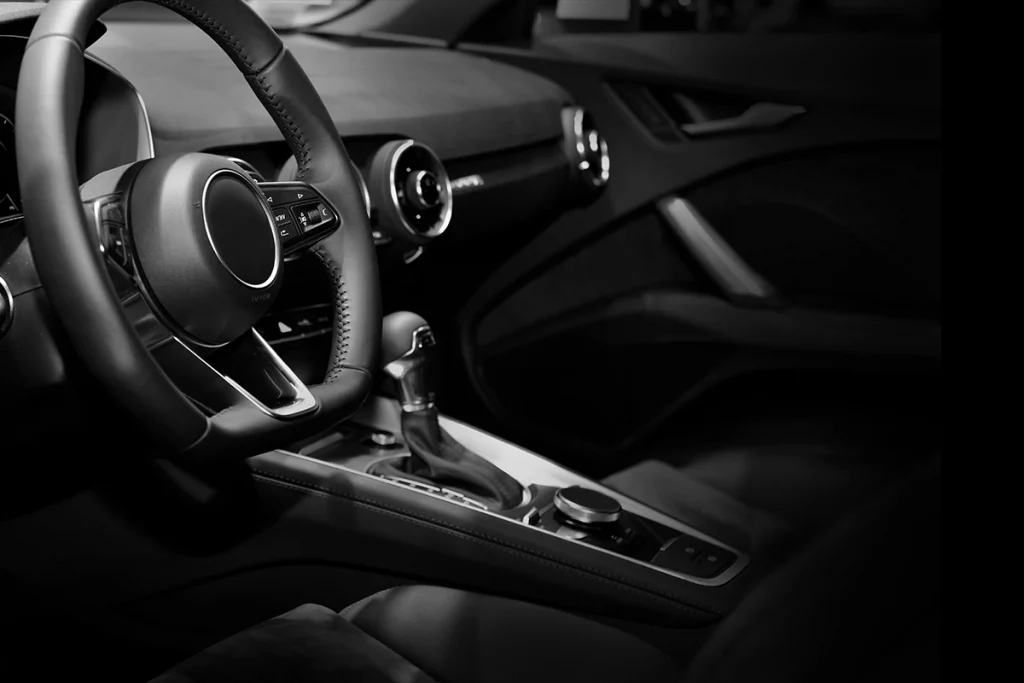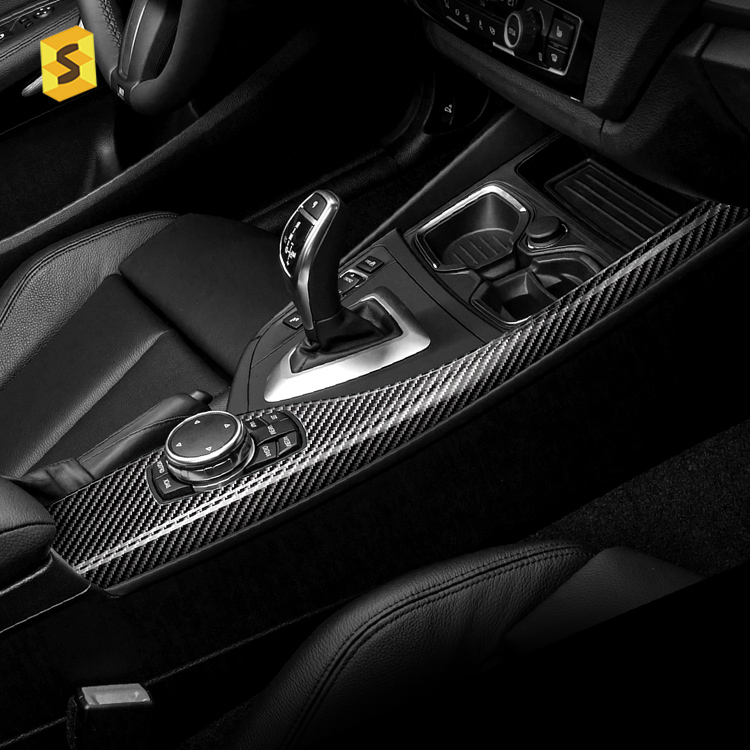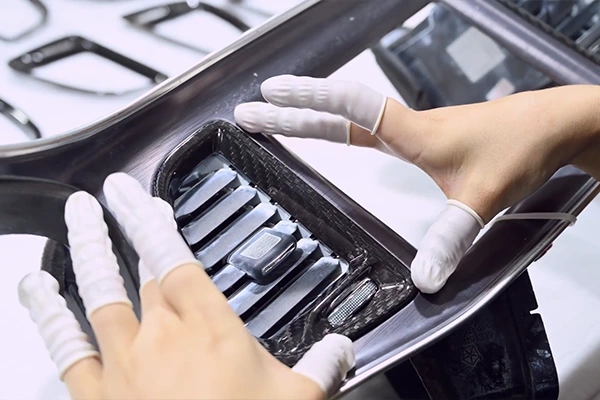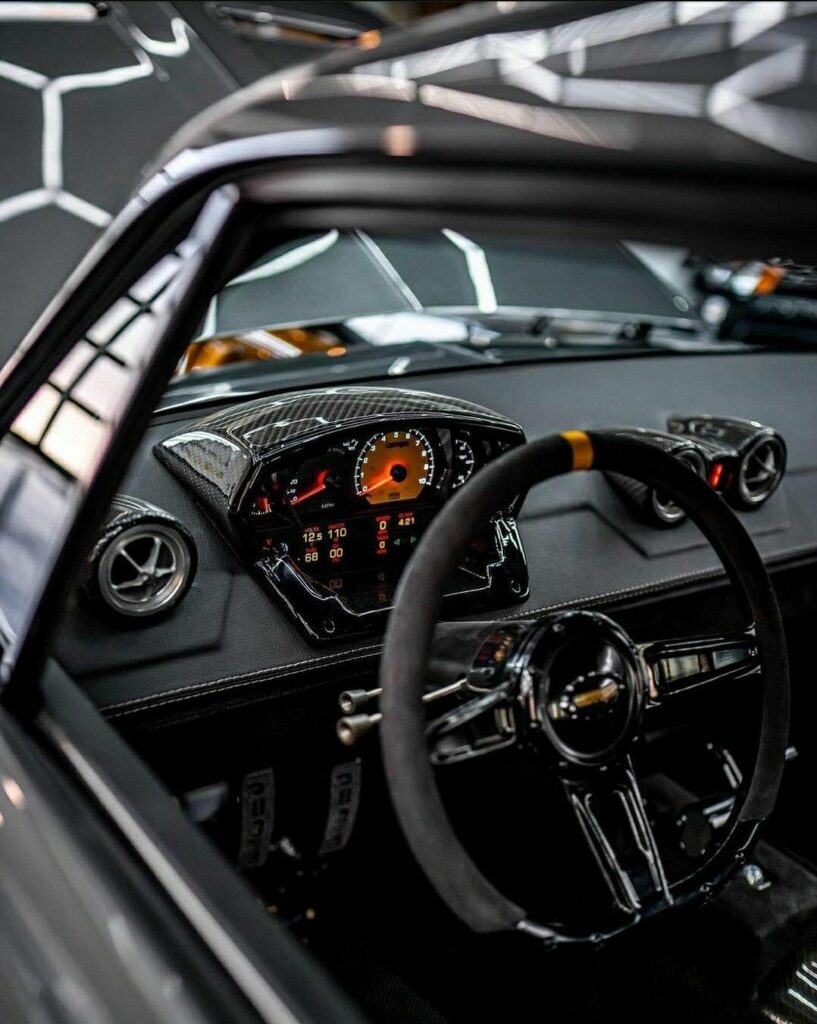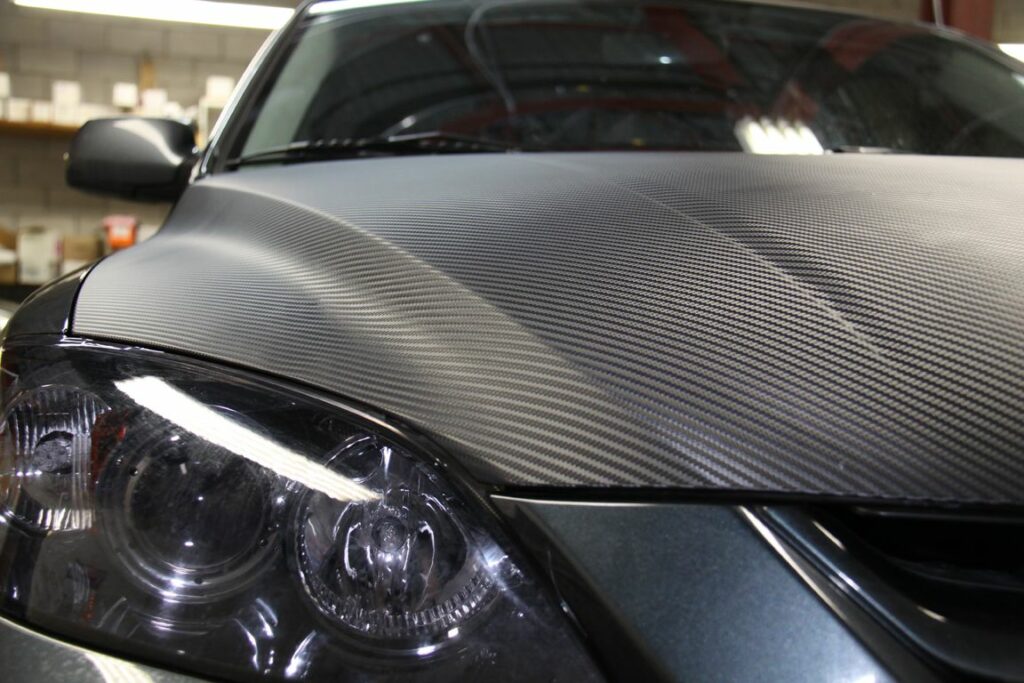
source: pinteres
Carbon fiber has become a popular material for various car parts, including car interiors. This lightweight material offers numerous benefits that have made it an ideal option for car enthusiasts looking to customize their vehicle interiors.
In this article, we will explore the uses of carbon fiber in car interiors and the various customization options available for carbon fiber interior trims. We will also discuss the differences between carbon fiber use in car exteriors and interiors, its benefits, and the process of trimming carbon fiber interior parts.
What is Carbon Fiber?
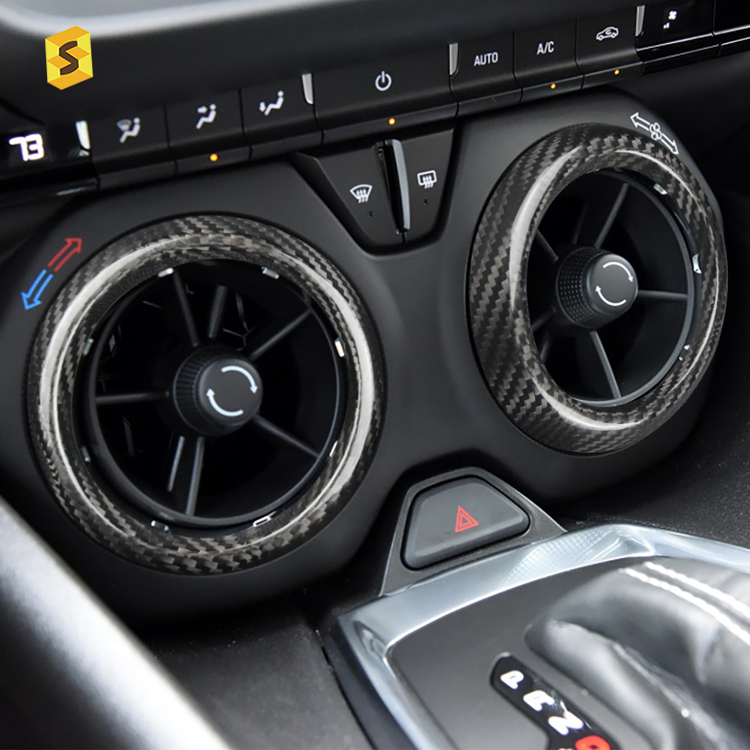
Carbon fiber is a composite material that is made up of carbon fibers woven together and infused with a resin or polymer. The carbon fibers are formed by heating polymer fibers or other organic material fibers to high temperatures in a process called carbonization. The resulting carbon fibers are incredibly strong, stiff, and light, all while being able to flex and bend without breaking.
The high strength-to-weight ratio of carbon fiber makes it ideal for use in various car parts, including car interiors. It is approximately five times stronger than steel, yet only one-third of the weight, offering significant improvements in fuel efficiency and performance. Carbon fiber is also resistant to temperature changes and is exceptionally durable over time.
Although the production of carbon fiber is a complicated and expensive process, it has been widely adopted in various industries, including aerospace, sports, and automotive. In the automotive industry, carbon fiber has been used to replace heavier metals and materials, with significant benefits in terms of reducing weight and improving performance.
As the demand for lightweight, high-performance materials grows, carbon fiber is quickly becoming a popular choice among car enthusiasts who seek to improve their cars’ handling, acceleration, and overall performance. It is a key material in the customization of a range of car parts, including interiors, allowing for unique and stylish designs with a performance edge.
Carbon Fiber Car Interior Advantages
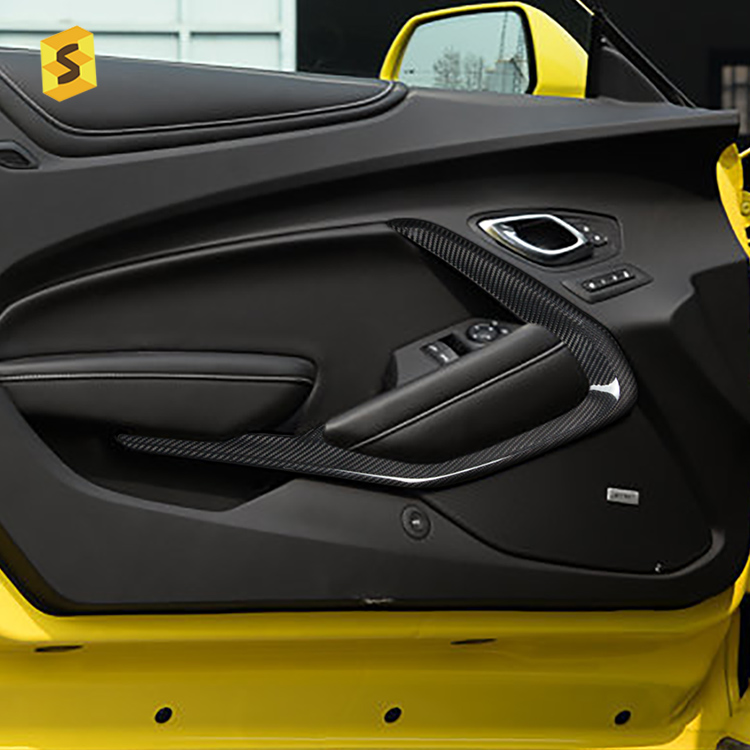
Carbon fiber is a highly sought-after material for car interiors due to its unique properties. It is lightweight, strong, and durable, and offers a modern and distinctive look. Carbon fiber is commonly used for interior parts such as dashboard trim, door panels, center console, and steering wheel.
High Strength-to-Weight Ratio
One of the primary advantages of using carbon fiber in car interiors is its high strength-to-weight ratio. This feature offers significant weight savings, which can improve a car’s performance and fuel efficiency. Carbon fiber reinforcement can also increase stiffness and impact resistance, which makes it a safer material in case of an accident.
Resistance to Temperature Changes
Another key advantage of using carbon fiber in car interiors is its resistance to temperature changes. This makes it an ideal material in cars with high-performance engines or in extreme weather conditions. Unlike materials such as plastic or vinyl that may melt or warp when exposed to high heat, carbon fiber is highly resistant to temperature changes, making it a durable and reliable option for car interiors.
Highly Customizable
Carbon fiber parts are also highly customizable, with a variety of finishes, colors, and patterns available. These customization options allow car owners and enthusiasts to create bespoke interiors that reflect their unique style and preferences. Some popular carbon fiber customization options include high gloss or matte finishes, colored carbon fiber, and unique patterns such as checkered or braided carbon fiber.
In summary, the benefits of carbon fiber in car interiors are significant, ranging from improved performance and fuel efficiency to durability and resistance against temperature changes. Its lightweight, high-strength properties also make it an attractive material for customization options. Carbon fiber continues to be a favorite among car enthusiasts who want to create a unique and high-performance car interior.
Carbon Fiber Interior Trim Options
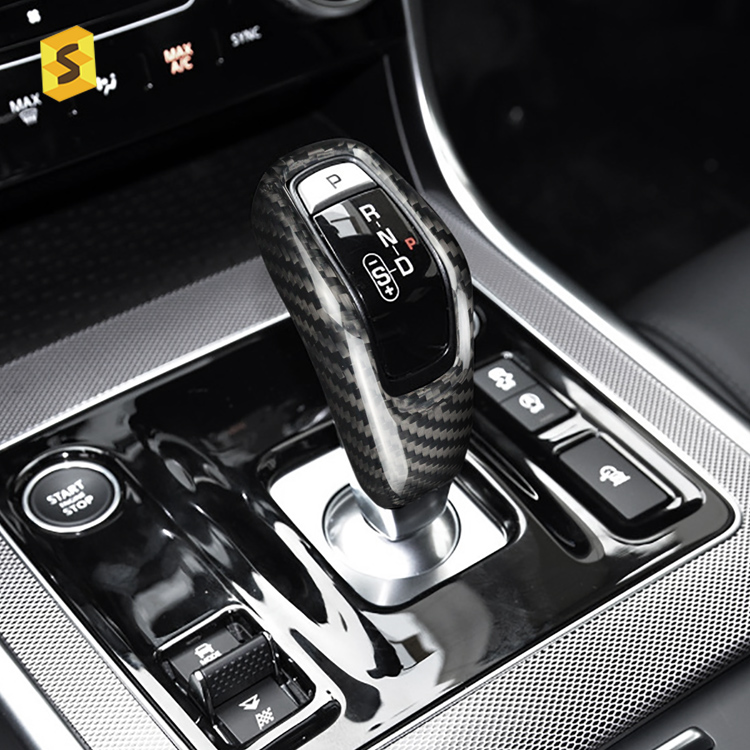
Carbon fiber interior trim options come in a range of colors, patterns, and finishes. Options range from standard black carbon fiber to unique colors such as blue, red, or gold.
Trimming carbon fiber interior parts requires precision and knowledge. Skilled auto specialists know how to trim carbon fiber parts without ruining the original form or compromising the structural integrity of the material. They also know how to protect the finish to ensure it lasts longer and performs to the expected standards.
A High Gloss Finish
One of the most commonly used finishes for carbon fiber interior trim is a high gloss finish, which adds a sleek and modern look to the car’s interior. While other finishes such as satin, matte and semi-gloss are also available. Furthermore, car enthusiasts can add bespoke designs to carbon fiber interior trims, such as pinstriping, letters, or sports team logos.
Diverse Colors and Patterns
Additionally, several colors and patterns are available for carbon fiber interior trims. Car owners and enthusiasts can choose from standard colors such as black or white or more unique colors such as blue or red. Additionally, a broad range of patterns, from marbled or flame to checkered or braided, provides even more choices to achieve a unique car interior.
Customization Options
Finally, customization options are available for carbon fiber interior trims, enabling car enthusiasts to create personalized designs. For example, car interiors can be fitted with bespoke carbon fiber trim pieces, which are individually designed, crafted and installed for a one-of-a-kind look. Furthermore, car enthusiasts can opt for exclusive designs or engrave specific wording, making the car interior trim truly unique.
In summary, there are several customization options available for carbon fiber interior trims, ranging from various colors and patterns to specialized treatments and finishing. These customization options allow car enthusiasts to design and create bespoke and unique car interiors, differentiating them from the rest. Trustworthy auto specialists who have experience with carbon fiber can provided advice, guidance and installation services, ensuring that customizations are done correctly and professionally.
Carbon Fiber Car Exterior vs Interior

source: pinteres
Carbon fiber is a material that is commonly used in car exteriors and car interiors. While the benefits of carbon fiber are many, certain differences exist in how it is used in these two main areas of a car.
Carbon Fiber Car Exterior
Carbon fiber exteriors have been widely adopted by car manufacturers for several reasons, including its excellent strength-to-weight ratio, structural stiffness, and durability. Carbon fiber parts allow for a lower overall weight of the car and can improve its fuel efficiency, handling, and performance. Carbon fiber is commonly used in parts such as hoods, roofs, and spoilers, which can also add to their aesthetics.
Carbon Fiber Car Interior
Carbon fiber car interiors have also gained popularity, with drivers seeking to add a distinctive and modern touch to their car’s cabin. Interior pieces fashioned from carbon fiber tend to be lighter, stronger, and more stylish than traditional parts, enhancing the driving experience. These interior parts include steering wheels, dashboards, center console, and door panels.
Differences
While carbon fiber is used in both car exteriors and interiors, there are certain differences between the two uses. In exteriors, carbon fiber is exposed to harsh environments and weather conditions, which can cause it to fade, crack or weaken. Therefore, carbon fiber parts designed for exterior use typically feature a thicker and more protective clear coat to increase durability.
In comparison, carbon fiber parts used in car interiors tend to have a smoother finish and feature a thinner coating. They are also less prone to damage from environmental factors, as they are typically shielded inside the car. Additionally, exterior parts often need specialized equipment and techniques for installation, while interior parts can be more easily and precisely fitted in place.
Conclusion
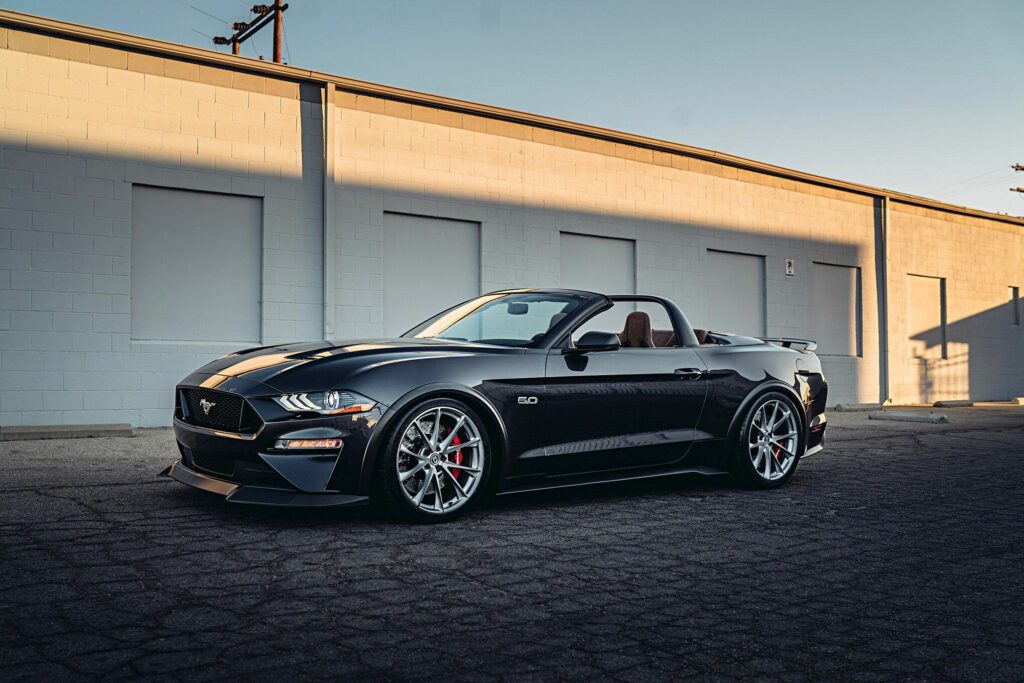
source: pinteres
Carbon fiber is an innovative and practical material used for car interiors that provides numerous benefits. From its lightweight and high strength-to-weight ratio to its unique customization options, carbon fiber remains a popular choice for making lightweight, high-performance and premium car interiors.
Additionally, carbon fiber allows for creative and customisable trimming, providing endless possibilities for bespoke modifications in a car’s interior. Car enthusiasts have mastered its use to create distinct and personalized designs. Its growing popularity is expected to add even more variety to the already diverse line of car interiors.



